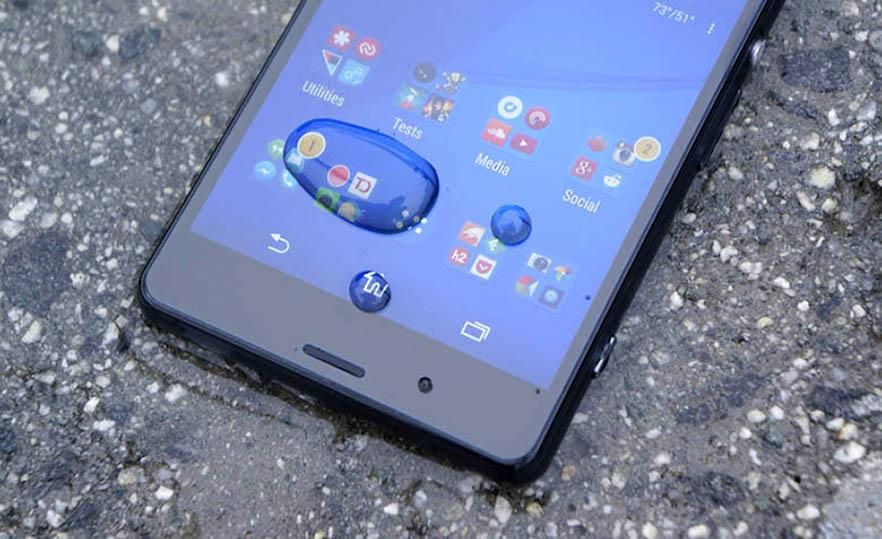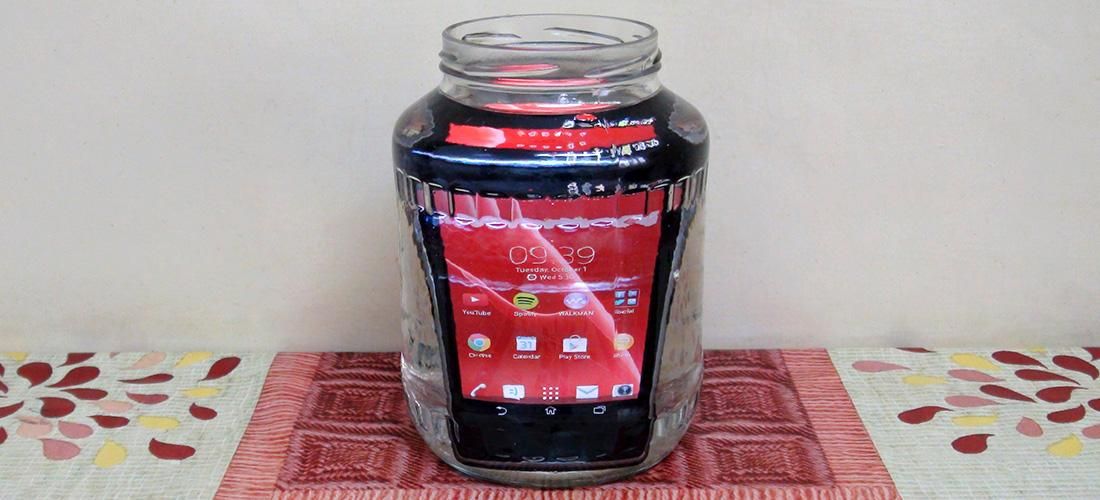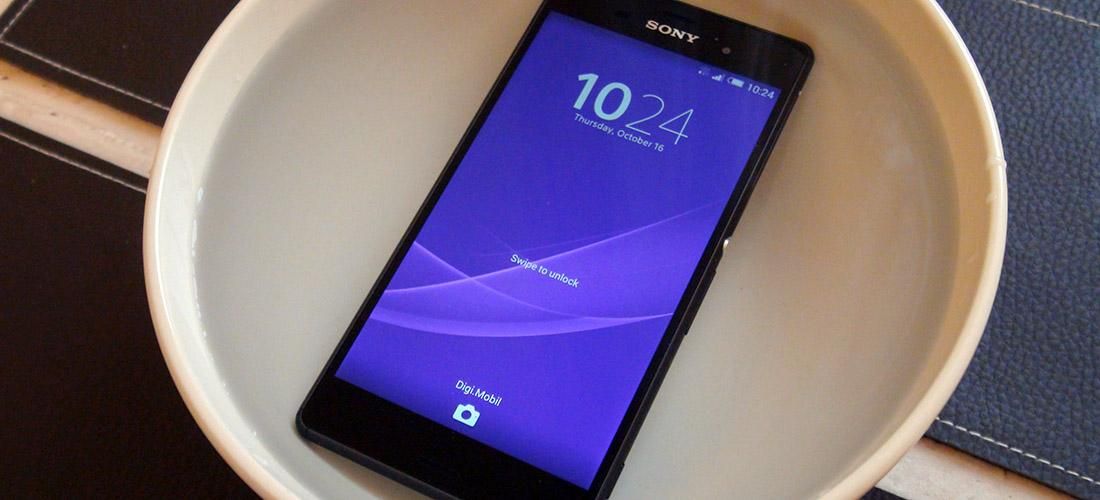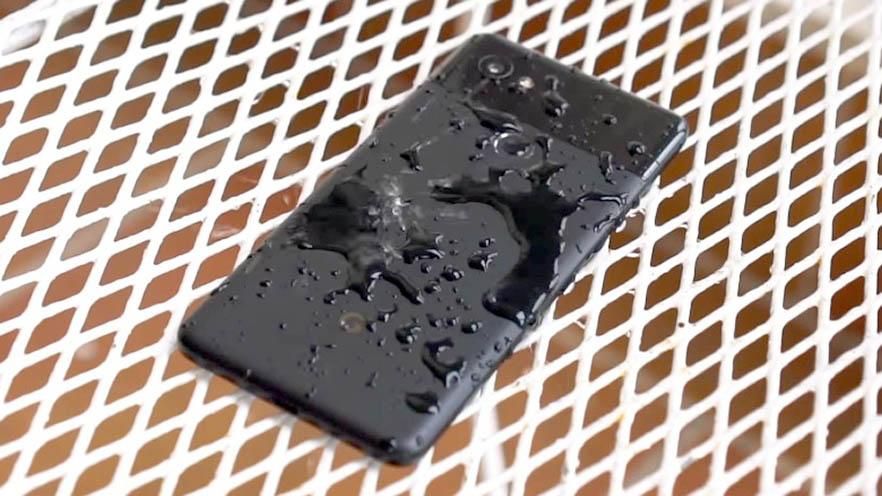More and more manufacturers are building smartphones that have some sort of water resistance ratings. Careful: you shouldn’t confuse water resistance with waterproofing. While waterproof means total impermeability regardless of the amount of time spent in water, water resistance is different. It means that a phone can usually be submerged, up to a specific depth, for a specific period of time. This largely depends on the IP-rating of the phone, and varies from 1 meter to 3 meters, and from 15 minutes to about 30.
You don’t have to worry with IP67 and IP68 rated smartphones. Well, you do, in case they use flaps with gaskets to maintain a seal. While charging and headphone ports are usually micro-coated, it’s the SIM and microSD card slots that usually employ these gaskets to prevent water from entering the smartphone. You should always make sure that all of these flaps and trays and, in general, moving parts, are well in place before even considering exposing your phone to water.
But not all phones are water resistant by design, and, as we’ve seen above, even some water-resistant phones can get water-damaged if the user fails to secure trays in place. Water damage is among the top most common smartphone problems experienced by owners. So, what to do after you get your phone wet?
If you splashed your phone
If you just splashed your phone, immediately wipe it off/dry, especially if your phone has zero water tolerance rating. At this point, if you got your phone wet with just some splashes, chances are that no harm has been done. You might experience worse than normal speaker and earpiece performance, but that’s due to water blocking the speaker or its membrane. It will go away as soon as it evaporates. If it’s something else than water you got your phone wet or splashed with, it might all depend on how lucky you are. It’s time to hope that no residue is left over after the liquid evaporates. In any case, wipe it off as soon as you can.
Bonus tip: if you phone is water resistant to a certain degree, and you’ve splashed it with something other than water, you can consider quickly rinsing it with tap water. Don’t use any soap or similar product. Rinsing it with clear/tap water washes out the original liquid, reducing the chance of leftover residue damaging something. Wipe it off and have patience. Speaker and earpiece should be back to normal within a few hours (sometimes days).
If you submerged your phone
If you don’t have a water-resistant phone, you should probably move to the next section. Chances are it’s already flooded, hence water-damaged.
If you have an IP67 or IP68-rated smartphone, and you didn’t keep it under deeper than 1m water for longer than 30 minutes, you should be just fine, as in the case of a splashed phone above. Speaker and earpiece performance should be back to normal.
If you kept it longer in deeper waters, or your flaps, ports, and trays weren’t tightly secured, you should too head over to the next segment, as you are likely to now have a water-damaged phone due to internal flooding.
If you have a flooded, water-damaged phone
Pull it out of the water
The first thing you need to immediately do in this case is to pull it out of the water. Every second a phone stays submerged counts towards permanently damaging it.
Remove the battery
As soon as you pulled it out of the water, remove the battery right away. That might not be easy, with most smartphone manufacturers recently opting to offer non-removable battery models. If you can, pull out the battery straightaway. This reduces the chances for a short circuit to permanently harm some of the components exposed.
Power off
If you have a phone with a non-removable battery, power off your phone immediately if it hasn’t shut itself down. If your phone is already powered off, do not turn it back on. Do not plug it in, do not attach headphones or insert anything into the ports.
Do not press any of the buttons
Pressing buttons increases the chances for more water to get inside, or, for whatever reason, for your phone to power back on.
Other things you shouldn’t do
Whatever you do, don’t shake, slap, tap, or bang the phone. You don’t want water to reach parts of the phone it hasn’t already. Don’t blow on it either. These can all contribute to water getting deeper inside your phone, maybe damaging components that were not yet exposed to water. Whatever you do, don’t microwave it, don’t use a hairdryer, or any other device that heats it up.
Remove it from its case
At this point you’ll need to remove it from its protective case, if any is used.
Remove SIM and memory cards
Always hold the phone in a way that will allow water to come out of the phone through a port, rather than go deeper. Holding it upright allows the water to come out of the speaker hole, charging, or any other port. When you have to eject a tray to access the SIM and/or memory card slot, hold it so that water is coming out once the tray is ejected. This might mean turning it to the side, or upside down, depending on where your trays are located.
Pat it dry
Use a paper towel or cloth to soak up the water and pat your phone dry. Try to do so in a way that doesn’t send excess water inside the phone.
Let it dry
At this point either lock it in a zip-bag buried in uncooked rice, or use one of the phone drying kits and bags commercially available. Uncooked rice has a natural capability of absorbing humidity and liquid, one which is far inferior to silica gel (which is what most phone drying kits contain – those tiny little particles you find in white paper bags every time you buy shoes, electronics, etc.).
Give it one or two days. The rule of thumb here is that the more you are able to wait, the more chances you have at fixing the phone. Resist the temptation to turn it on in order to see whether it is working or not. Use your SIM in another phone, and just forget about your flooded one for as much as you can.
The moment of truth
After at least a couple of days, you can remove it from the bag, reinsert the battery, SIM and memory cards, and try to turn it on. If it doesn’t turn on, try charging it.
At this point, your phone will either start up or not. If it doesn’t, it’s time to take it to a service center and hope the costs of repair are tolerable. However, if it starts up, use your phone as you normally would (minus the water flooding part) and pay attention to how it operates. If something is damaged, you should notice. Check buttons, screen, camera, earpiece, speaker, ports. If they’re all working as they should, the lesson you have just learned will teach you where to not take your phone in the future (pool, beach, bathroom, kitchen sink, etc.). If you have faulty hardware elements or misbehaving components, time to visit that repair center.
Hopefully you’re here reading this article “just in case”. If you are here because you got your phone wet, we hope that these steps have helped you.
We thank you for taking the time to read this post. If you’ve liked this article, or if it helped you in any way, please share it with your friends, family, or social media. Death by drowning is a terrible smartphone demise.





